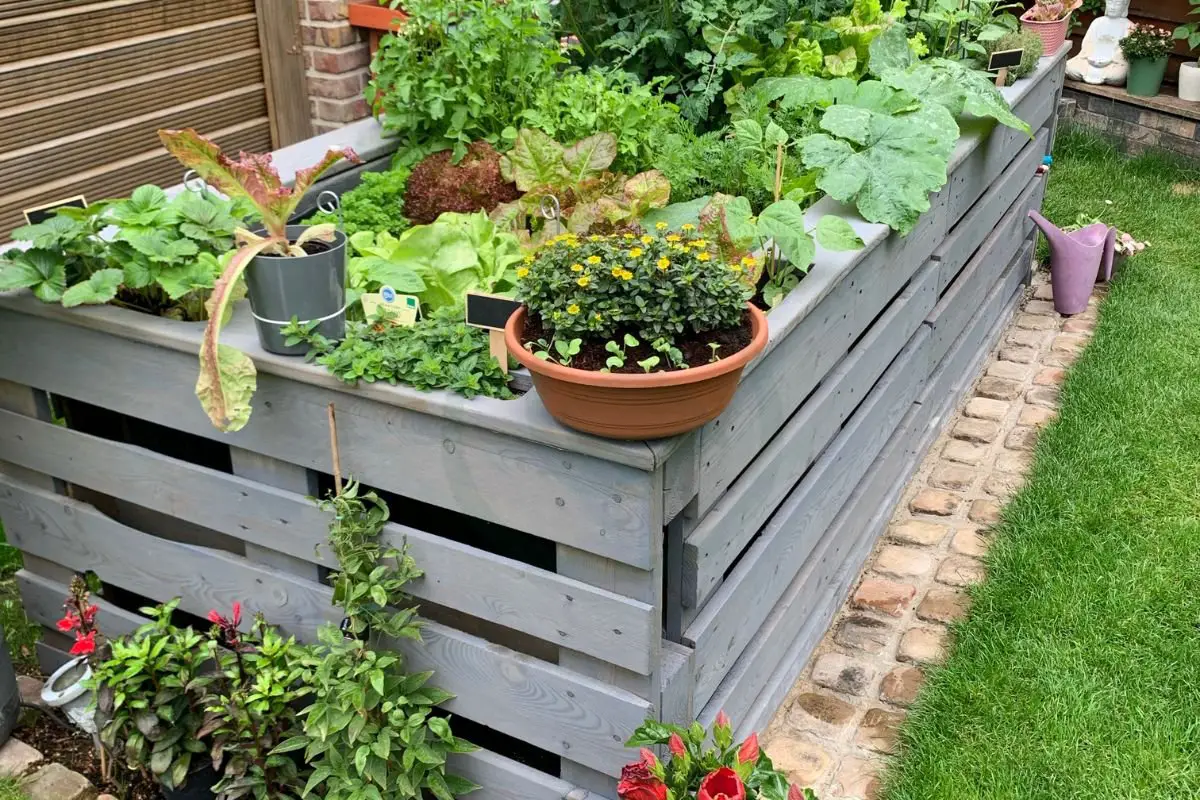Looking for comprehensive information on Types of Raised Bed Gardens? Look no further! We're here to guide you through the plethora of options available, helping you make informed decisions about your gardening journey.
Raised bed gardens come in various types, each offering unique advantages suited to different needs and preferences. Here's a breakdown:
- Traditional wooden raised beds: Versatile and customizable, these are constructed using untreated lumber and offer easy maintenance.
- Metal raised beds: Durable and sleek, these beds are perfect for modern gardens and are resistant to rotting or warping.
- Concrete block raised beds: Sturdy and long-lasting, these beds provide excellent insulation for plants and offer a permanent gardening solution.
- Straw bale raised beds: Environmentally friendly and easy to set up, these beds utilize straw bales as a growing medium, perfect for organic gardening.
- Keyhole raised beds: Efficient and space-saving, these circular beds feature a central composting basket, providing nutrients to surrounding plants.
With so many options to choose from, selecting the right type of raised bed garden can seem daunting. However, by considering factors such as space availability, budget, and aesthetic preferences, you can find the perfect fit for your gardening needs. Dive deeper into each type to discover which one aligns best with your goals and preferences.
Key Takeaways
- Raised bed gardens offer a versatile and customizable gardening option for various spaces and preferences.
- Choose durable and non-toxic materials like cedar or composite for longevity and safety in raised bed construction.
- Tailor the design of your raised bed to suit your space, considering factors like height, width, and accessibility for efficient gardening.
- Optimize soil quality by layering with a mix of compost, soil, and amendments to provide a nutrient-rich environment for plant growth.
- Implement diverse planting strategies such as companion planting and succession planting to maximize space and yield in your raised bed.
- Efficient watering solutions like drip irrigation or soaker hoses can help maintain proper moisture levels in raised bed gardens.
Raised Bed Basics
Purpose Served
Practical Benefits
- Start fresh with healthy soil by choosing raised beds.
- Extend the growing season due to warmer soil in raised beds.
- Enjoy better drainage compared to in-ground beds when opting for raised beds.
Aesthetic Value
- Use raised beds as a beautiful hardscaping element in your garden.
- Create an outdoor room feel by incorporating raised beds into your landscape.
- Enhance your garden's aesthetics with the addition of raised beds.
Ideal Dimensions
Height Considerations
- Aim for a minimum height of six inches for optimal raised bed growth.
- Consider deeper beds to ensure improved drainage and root growth.
- Optimal depth for convenience and aesthetics is around two feet.
Width and Length
- Ensure a minimum width of 18 inches for raised bed functionality.
- Stick to a maximum width of about four feet for practicality and accessibility.
- The ideal length for raised beds typically ranges from 10 to 12 feet.
Choosing Locations
Sunlight Access
- Place raised beds strategically to ensure plants receive optimal sunlight exposure.
- Consider the orientation of your raised beds to maximize sunlight access throughout the day.
- Ensure that plants in your raised beds receive sufficient sunlight for their healthy growth and development.
Water Convenience
- Opt for raised beds if you prefer an easier watering routine in your garden.
- Consider installing irrigation systems in your raised beds for more efficient watering practices.
- Ensure that your raised beds have proper drainage mechanisms in place to prevent issues like waterlogging.
Material Choices
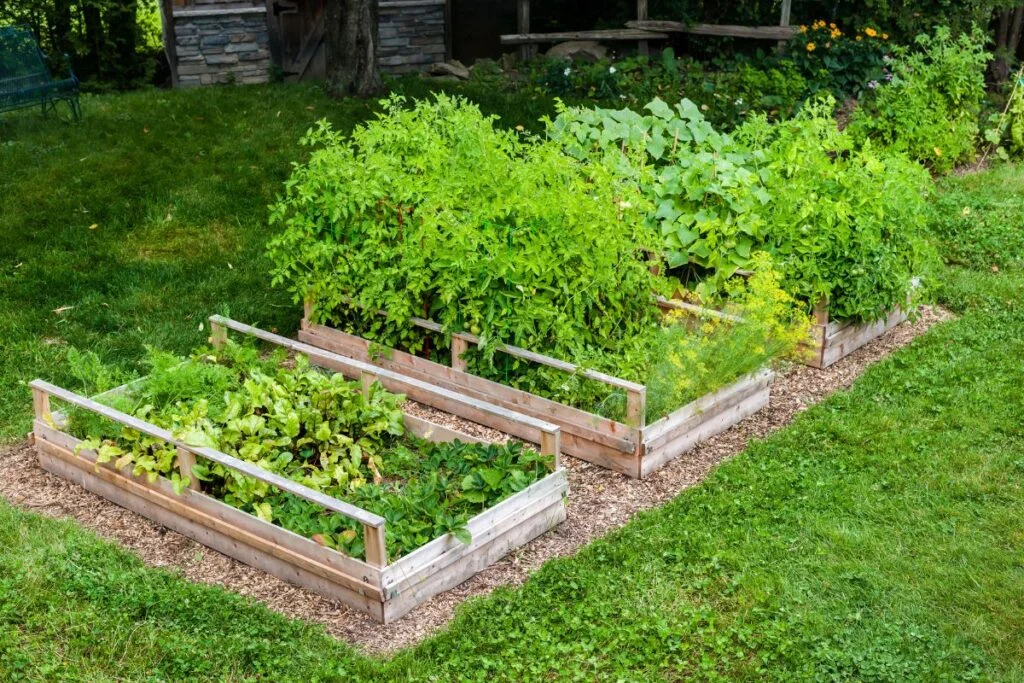
Wood Varieties
When considering wood varieties for raised bed gardens, cedar wood stands out as a top choice. Its durability and preference among gardeners make it a reliable option. Choose wood based on factors like durability and aesthetics to ensure the longevity and visual appeal of your raised beds. Opting for rot-resistant wood can significantly extend the lifespan of your garden beds.
Steel Options
For those looking for sturdy raised beds, exploring steel options such as Corten steel is highly recommended. These choices offer durability that can withstand various weather conditions. Considering powder-coated metal provides a sustainable solution for environmentally conscious gardeners. Steel materials not only offer a modern aesthetic but also ensure long-lasting performance for your raised beds.
Stone Alternatives
When contemplating materials for raised beds, consider using stone, known for its longevity and food-safe properties. Different types of stones can be utilized in constructing raised beds based on personal preferences and budget considerations. While stone may require initial investment, its durability and safety make it a worthwhile choice for long-term gardening needs.
Grow Bags
Grow bags present a versatile and portable option for gardening enthusiasts. These bags are ideal for individuals with limited space or those seeking temporary planting solutions. Opting for grow bags allows for easy mobility and care of plants, making them a convenient choice for various gardening requirements.
Designing Your Raised Bed
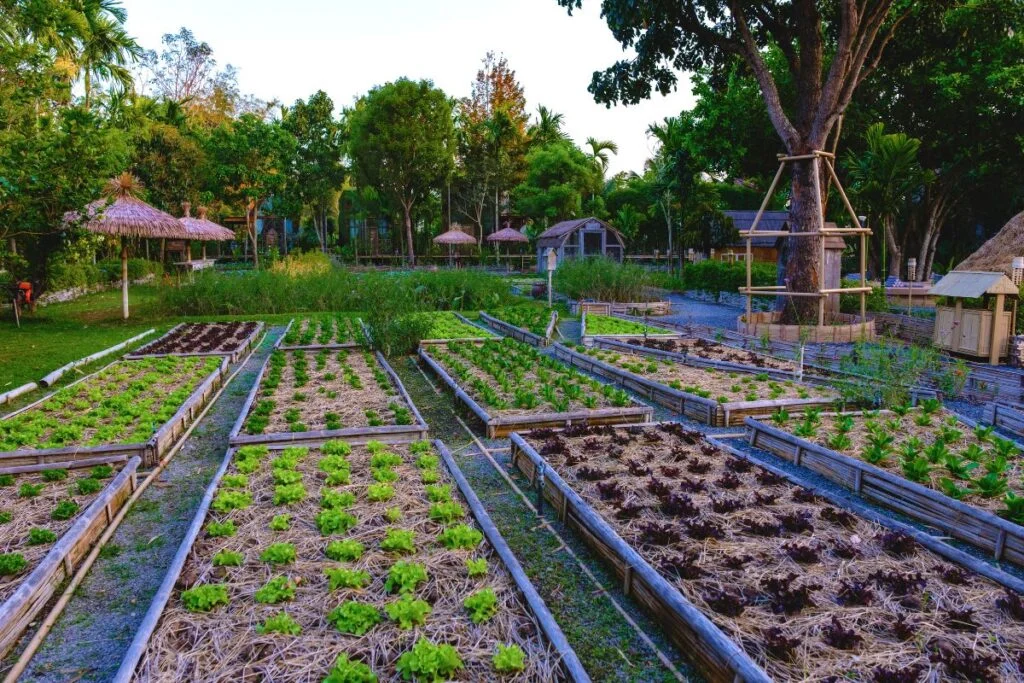
Aesthetic Design Tips
When designing your raised bed garden, incorporate raised bed designs that complement the overall style of your garden. Opt for shapes and patterns that add visual interest to your outdoor space. Select color schemes that harmonize with your garden's existing aesthetics.
Consider creating rectangular or square beds for a classic look, or experiment with circular or free-form designs for a more unique appearance. Incorporating curves can soften the edges and provide a dynamic visual element to your garden.
To enhance the appeal of your raised beds, mix different heights within the design. This adds depth and dimension to the garden while allowing for better visibility and access to plants. Using contrasting materials such as wood and metal can create an eye-catching focal point.
Incorporating Trellises
Integrating trellises into your raised bed setup allows you to utilize vertical space effectively for climbing plants like tomatoes, cucumbers, and beans. Trellises not only save ground space but also promote better air circulation around plants, reducing the risk of diseases.
Choose sturdy trellises that can support the weight of mature plants without bending or breaking. Consider installing them on the north side of your raised beds to prevent shading other plants from sunlight.
Select plant varieties that benefit from trellises, such as pole beans, peas, and indeterminate tomatoes. These crops thrive when given vertical support, leading to healthier growth and easier harvesting.
Filling Your Raised Bed
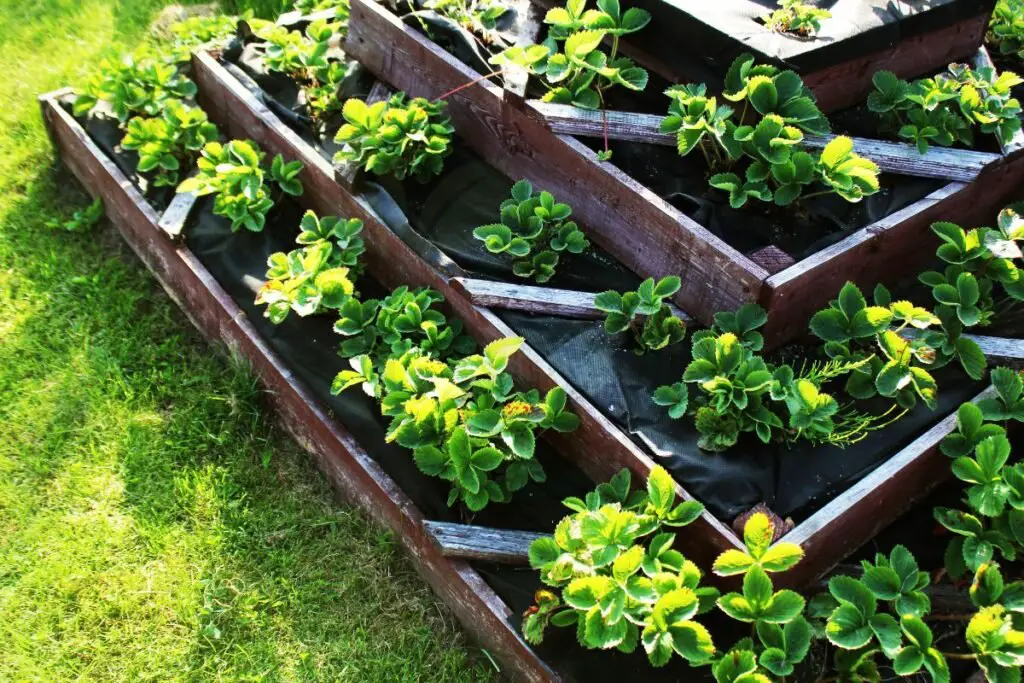
Soil Mix Selection
Choosing the right soil mix for your raised bed is crucial for healthy plant growth. Opt for nutrient-rich and organic soil to provide essential nutrients to your plants. Consider the cubic feet of soil needed based on the dimensions of your raised bed. This ensures that your plants have enough space to grow their roots properly. Quality soil promotes good drainage and aeration, creating an ideal environment for plant development in raised beds.
Bottom Layer Ideas
Enhancing drainage in your raised bed can be achieved by adding a bottom layer of gravel. This helps prevent waterlogging, which can harm plant roots. To combat weeds, consider using landscape fabric as a barrier between the soil and the ground beneath. Another eco-friendly option is to use cardboard or newspaper as a biodegradable bottom layer. These materials suppress weed growth while decomposing over time, enriching the soil with organic matter.
Planting Strategies
Best Plants Choices
When planting in raised bed gardens, select plants that are well-suited for this type of gardening. Choose varieties that can thrive in the limited space provided by raised beds. Opt for a diverse mix of vegetables, herbs, and flowers to maximize the productivity of your raised beds.
- Consider plants known for their compact growth habits.
- Opt for crops that do well with shallow roots.
- Choose plants that are compatible with each other to promote healthy growth.
Planting Techniques
In raised bed gardening, use square foot gardening techniques to make the most out of the available space. Employing this method allows for efficient use of every inch within the raised bed. Consider companion planting as a strategy to maximize the area and enhance plant growth.
- Implement a grid system within your raised bed for organized planting.
- Rotate crops yearly to prevent soil depletion and diseases.
- Utilize vertical planting methods to utilize all available space effectively.
Utilize succession planting in your raised bed garden to ensure a continuous harvest throughout the growing season. By staggering plantings at different times, you can enjoy a steady supply of fresh produce without overwhelming yourself with a single large harvest.
- Start with early-season crops like lettuce and radishes.
- Follow up with mid-season vegetables such as tomatoes and peppers.
- End the season with late-season crops like kale and Brussels sprouts.
Watering Solutions
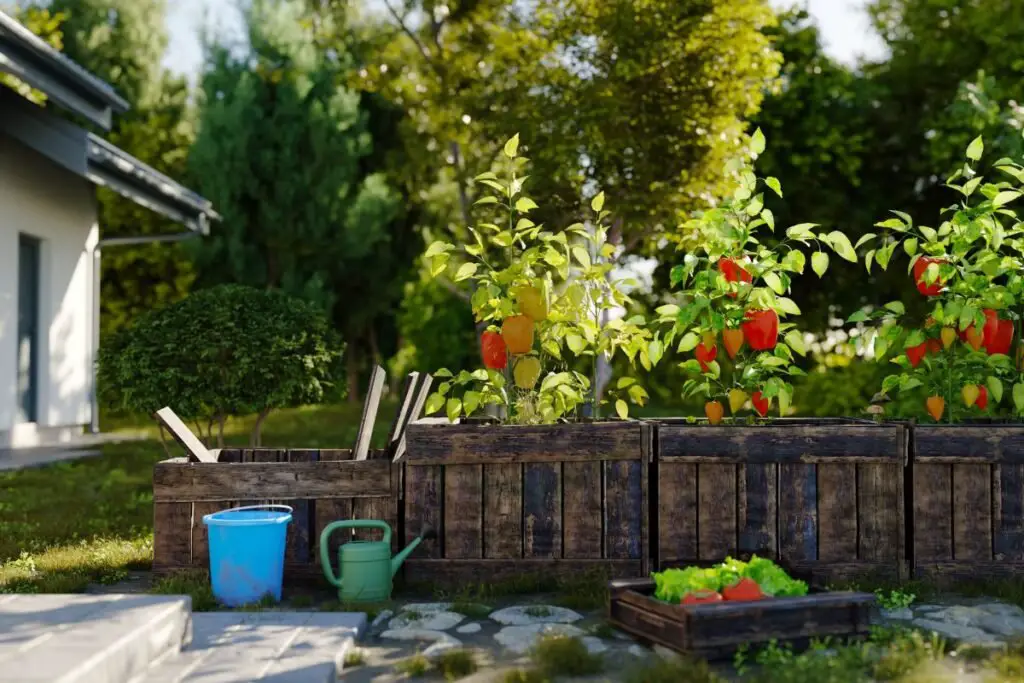
Efficient Watering Methods
Implement drip irrigation systems in raised beds to ensure each plant receives adequate water without wastage. This method delivers water directly to the plant roots, promoting efficient water usage. It minimizes evaporation, saving water in the long run.
Consider using self-watering containers as an alternative watering solution for raised beds. These containers have a reservoir that allows plants to absorb water as needed, reducing the risk of over or under-watering. They are particularly beneficial for busy individuals who may forget to water their plants regularly.
Opt for mulching around plants in raised beds to help retain soil moisture. Mulch acts as a protective layer, preventing water from evaporating too quickly and maintaining a consistent level of moisture in the soil. This method is especially useful during hot weather or dry spells when plants require extra hydration.
Raised Bed Advantages
Enhancing Garden Productivity
Rotating crops in raised beds helps maintain soil health by preventing nutrient depletion over time. By utilizing organic fertilizers, you can enhance plant productivity in raised beds, promoting healthier growth. Intercropping, which involves planting different crops together, maximizes yields and space efficiency in raised beds.
Elevating Garden Aesthetics
Incorporating decorative elements like garden art around raised beds adds a touch of visual appeal to your garden space. Adding lighting features not only illuminates the area during nighttime but also enhances the overall aesthetics of raised beds. Utilizing vertical gardening structures such as trellises or arbors not only saves space but also creates an eye-catching display in raised beds.
Maintenance Tips
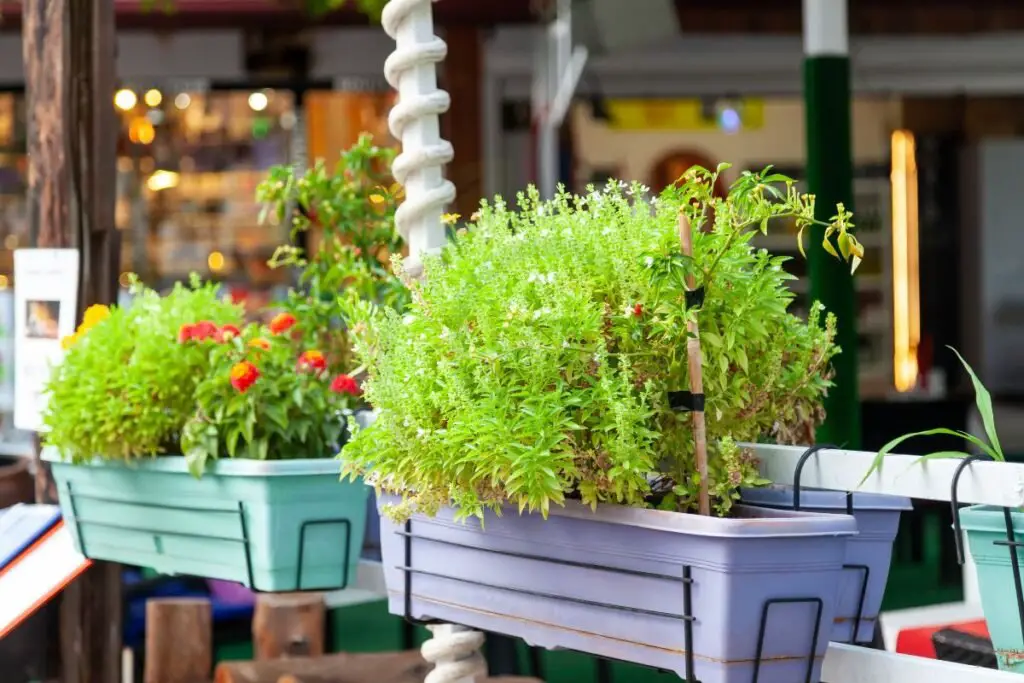
Seasonal Care
Prepare raised beds for winter by adding protective covers. This shields the soil and plants from harsh weather conditions, ensuring their survival. Consider crop rotation to maintain soil fertility and prevent pests and diseases. Cover cropping helps in enriching the soil with essential nutrients.
Prune plants and remove debris regularly for seasonal maintenance. This practice promotes plant health, prevents disease spread, and enhances air circulation within the raised bed garden. By staying proactive in upkeep, you ensure a thriving garden throughout the changing seasons.
Longevity Tips
Apply sealants to wooden raised beds for increased durability. This protective layer safeguards the wood from moisture damage and extends its lifespan. Regular inspections and maintenance routines are crucial to identifying issues early on and addressing them promptly.
Opt for high-quality materials when constructing raised beds to ensure their longevity. Investing in durable materials upfront saves time and money in the long run by reducing the need for frequent replacements or repairs. Prioritizing quality ensures a sturdy structure that withstands various weather conditions.
Final Remarks
As you delve into the world of raised bed gardens, remember to consider the basics, choose materials wisely, design thoughtfully, fill with care, strategize your planting, water diligently, enjoy the advantages, and maintain your garden regularly. By following these steps, you are well on your way to a thriving raised bed garden that will yield bountiful harvests and endless joy. Embrace the process, learn from each season, and watch your garden flourish with each passing day.
Now that you are equipped with the knowledge and tools to create and maintain a successful raised bed garden, it's time to put your plans into action. Start building your raised bed today, plant those seeds, and nurture your garden with dedication. Share your journey with others, seek advice when needed, and most importantly, enjoy the fruits of your labor. Happy gardening!
Frequently Asked Questions
What are the benefits of using raised bed gardens?
Raised bed gardens offer several advantages, including:
- Improved soil drainage
- Better control over soil quality
- Reduced weed growth
- Easier access for planting and maintenance
- Longer growing seasons due to warmer soil temperatures
How should I design my raised bed garden for optimal results?
When designing your raised bed garden, consider:
- Choosing a sunny location
- Determining the right size and height for easy access
- Using durable materials like cedar or composite wood
- Planning for proper spacing between beds for efficient maintenance
What materials are best for constructing raised bed gardens?
Opt for materials such as:
- Cedar wood (naturally rot-resistant)
- Composite lumber (durable and long-lasting)
- Concrete blocks (affordable and versatile)
- Recycled plastic lumber (eco-friendly option)
How do I effectively fill my raised bed garden?
Fill your raised bed with a balanced mix of:
- Garden soil
- Compost
- Peat moss or coconut coir
- Vermiculite or perlite for drainage
What are some key maintenance tips for raised bed gardens?
To maintain your raised bed garden successfully, remember to:
- Regularly check soil moisture levels
- Weed diligently to prevent competition
- Rotate crops annually to prevent diseases
Image Source: Paid image from CANVA

